Scaffolding Rental Miami
Top 10 Rent Scaffolding in Miami
Get 3 FREE Scaffolding Rental quotes for your project today! Compare profiles, reviews, accreditations, portfolio, etc... and choose the best offer.
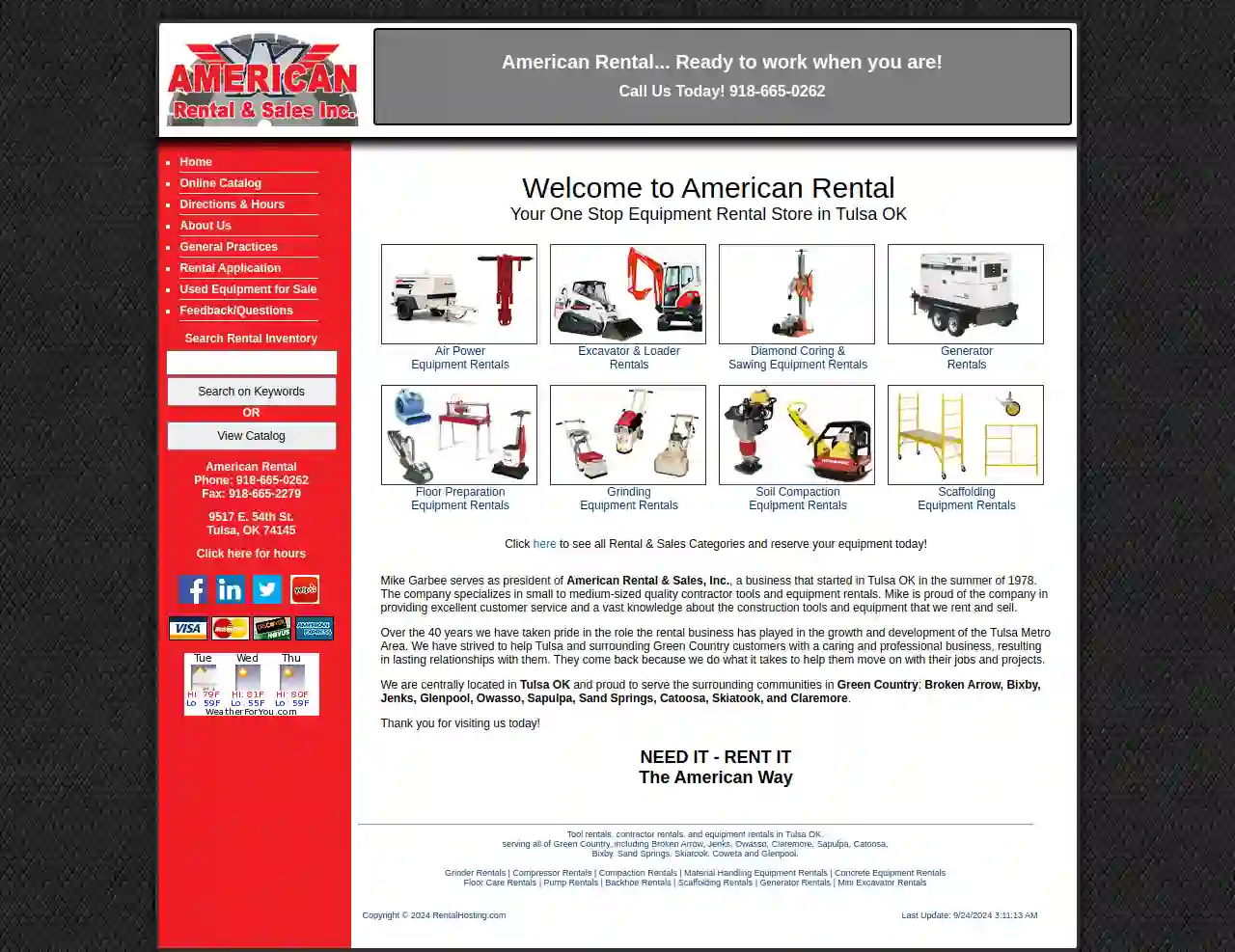
American Rental and Sales Inc
51 reviews9517 E. 54th St., Tulsa, 74145, USAmerican Rental & Sales, Inc. is a business that started in Tulsa, OK in the summer of 1978. The company specializes in small to medium-sized quality contractor tools and equipment rentals. With over 40 years of experience, they have taken pride in the role the rental business has played in the growth and development of the Tulsa Metro Area. They strive to provide excellent customer service and a vast knowledge about the construction tools and equipment that they rent and sell. They are centrally located in Tulsa, OK and proud to serve the surrounding communities in Green Country, including Broken Arrow, Bixby, Jenks, Glenpool, Owasso, Sapulpa, Sand Springs, Catoosa, Skiatook, and Claremore. They offer a wide range of equipment rentals, including air power equipment, excavator and loader rentals, diamond coring and sawing equipment rentals, generator rentals, floor preparation equipment rentals, grinding equipment rentals, soil compaction equipment rentals, and scaffolding equipment rentals. They are committed to helping their customers move forward with their jobs and projects, and they are proud of the lasting relationships they have built with their customers over the years.
- Services
- Why Us?
- Accreditations
- Our Team
- Gallery
Get Quote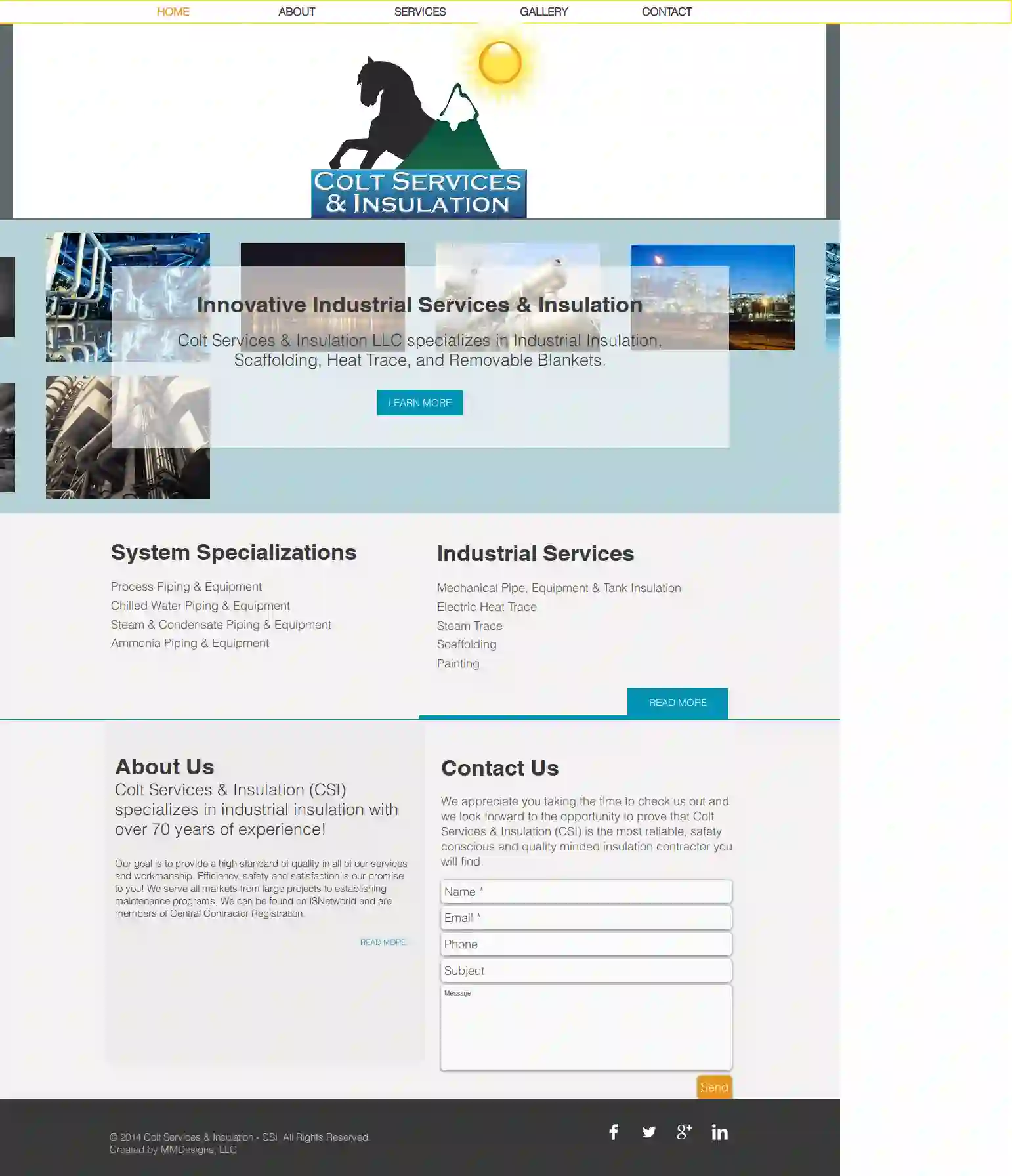
Colt Services
Tulsa, USColt Services & Insulation (CSI) specializes in industrial insulation with over 70 years of experience! Our goal is to provide a high standard of quality in all of our services and workmanship. Efficiency, safety and satisfaction is our promise to you! We serve all markets from large projects to establishing maintenance programs. We can be found on ISNetworld and are members of Central Contractor Registration.
- Services
- Why Us?
- Gallery
Get Quote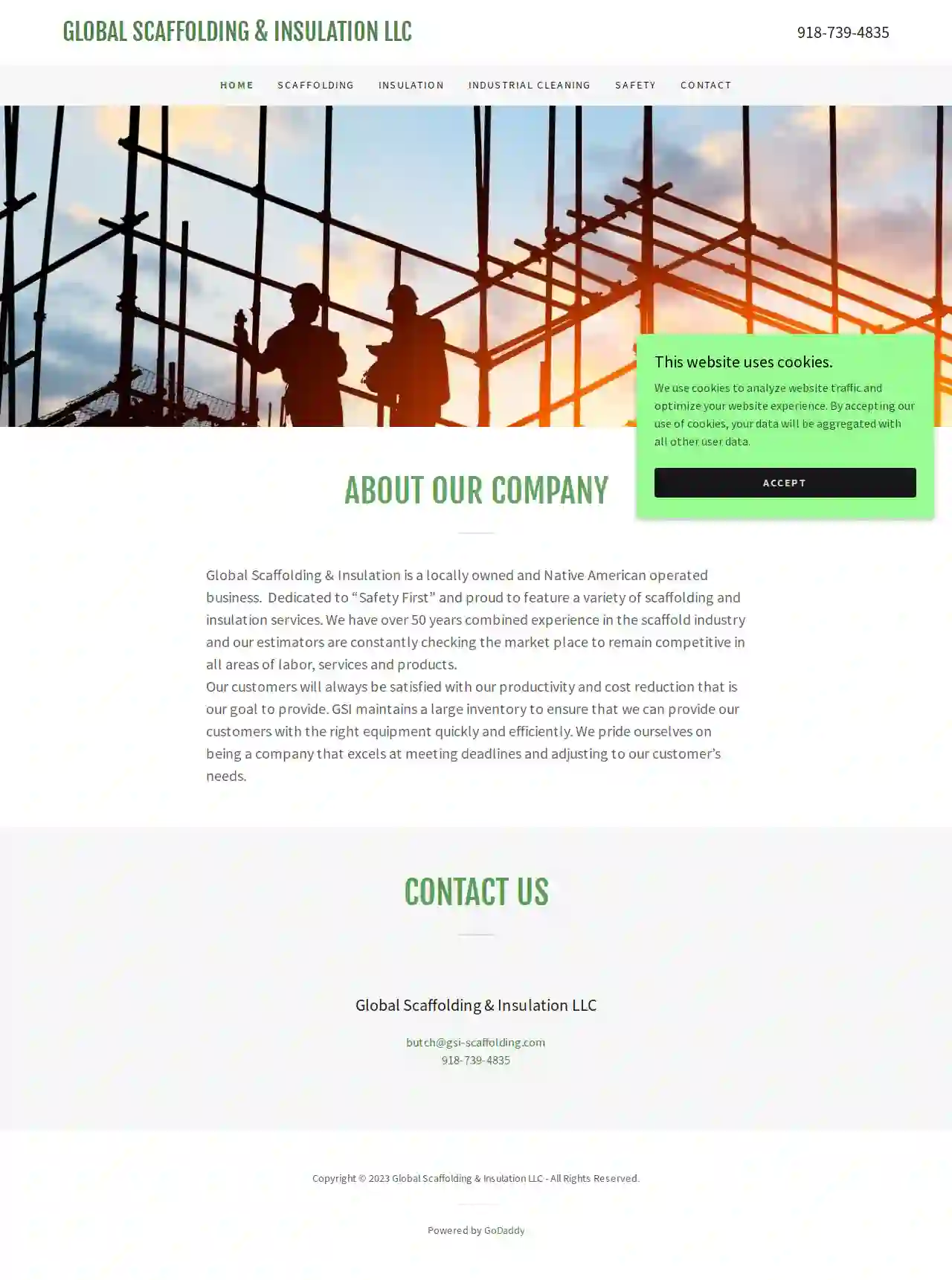
Global Scaffolding and Insulation
4.49 reviewsGlobal Scaffolding & Insulation LLC, 918, USGlobal Scaffolding & Insulation LLC is a locally owned and Native American operated business. Dedicated to “Safety First” and proud to feature a variety of scaffolding and insulation services. With over 50 years combined experience in the scaffold industry, our estimators constantly check the market place to remain competitive in all areas of labor, services, and products. Our goal is to provide our customers with productivity and cost reduction, ensuring satisfaction with our services. We maintain a large inventory to provide the right equipment quickly and efficiently, exceling at meeting deadlines and adjusting to customer needs.
- Services
- Why Us?
Get Quote
Thermal Insulation Pipe Solutions
4.84 reviewsTulsa, USAbout TIPS Plant Services With over 15 years of industrial and commercial insulation experience, we are the premiere choice for all of your insulation requirements. Ensuring that all jobs, no matter how big or small in scope, are finished on time and to the highest standards, all of the lowest prices possible, guarantees a stress free and budget saving environment for our clients. Established 2008 Clients More Than 500 Projects Completed Over 6287
- Services
- Why Us?
- Gallery
Get Quote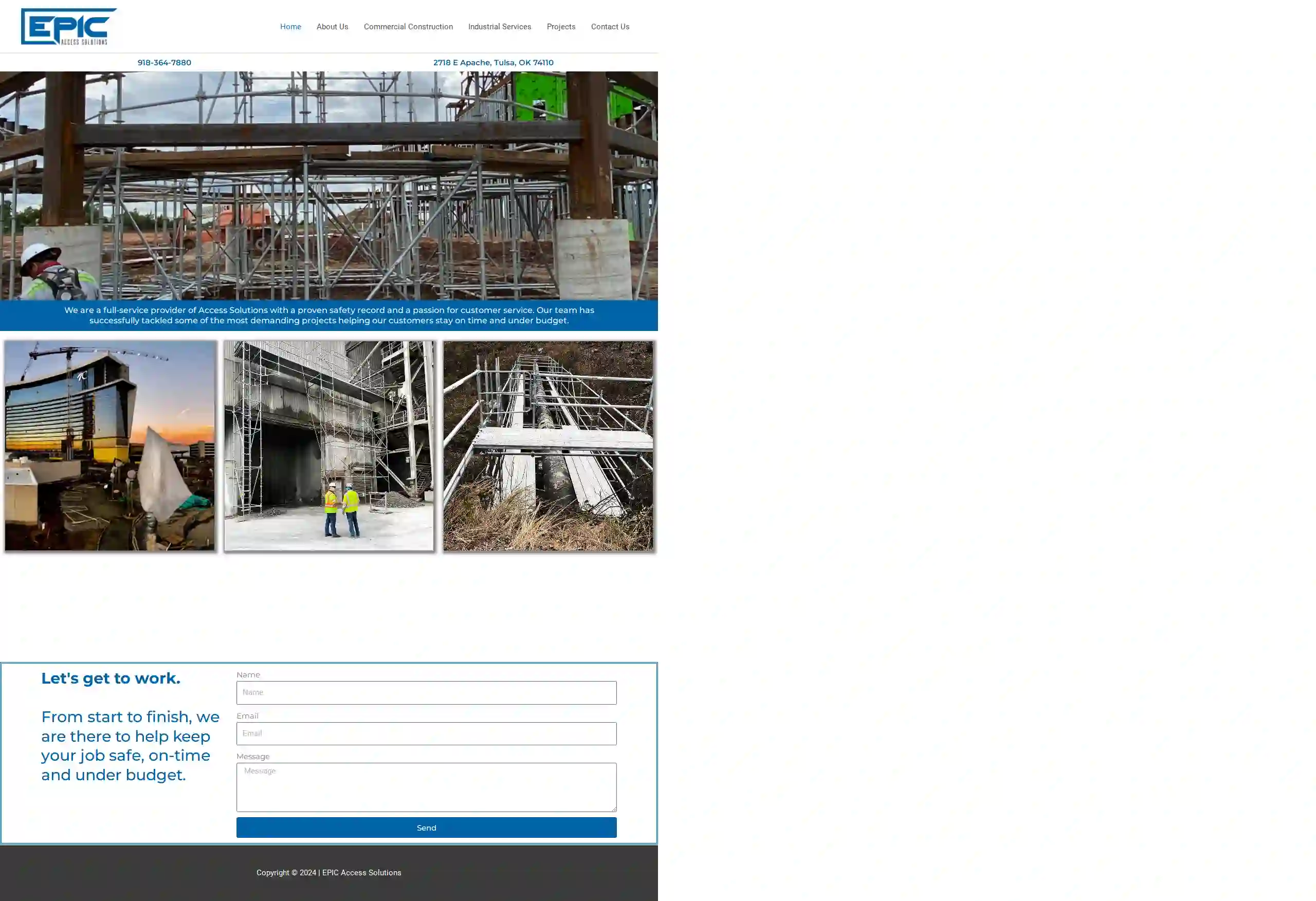
EPIC Access Solutions
4.25 reviews2718 E Apache, Tulsa, OK, 74110, USEPIC Access Solutions is a full-service provider of Access Solutions with a proven safety record and a passion for customer service. Our team has successfully tackled some of the most demanding projects, helping our customers stay on time and under budget. We specialize in Commercial Construction, Industrial Construction, and Civil Construction. Our commitment to safety is reflected in our excellent safety record and low EMR score. We are responsive, precise, and dedicated to making your job a success. From start to finish, we are there to help keep your job safe, on-time, and under budget.
- Services
- Why Us?
- Accreditations
- Our Team
- Testimonials
- Gallery
Get Quote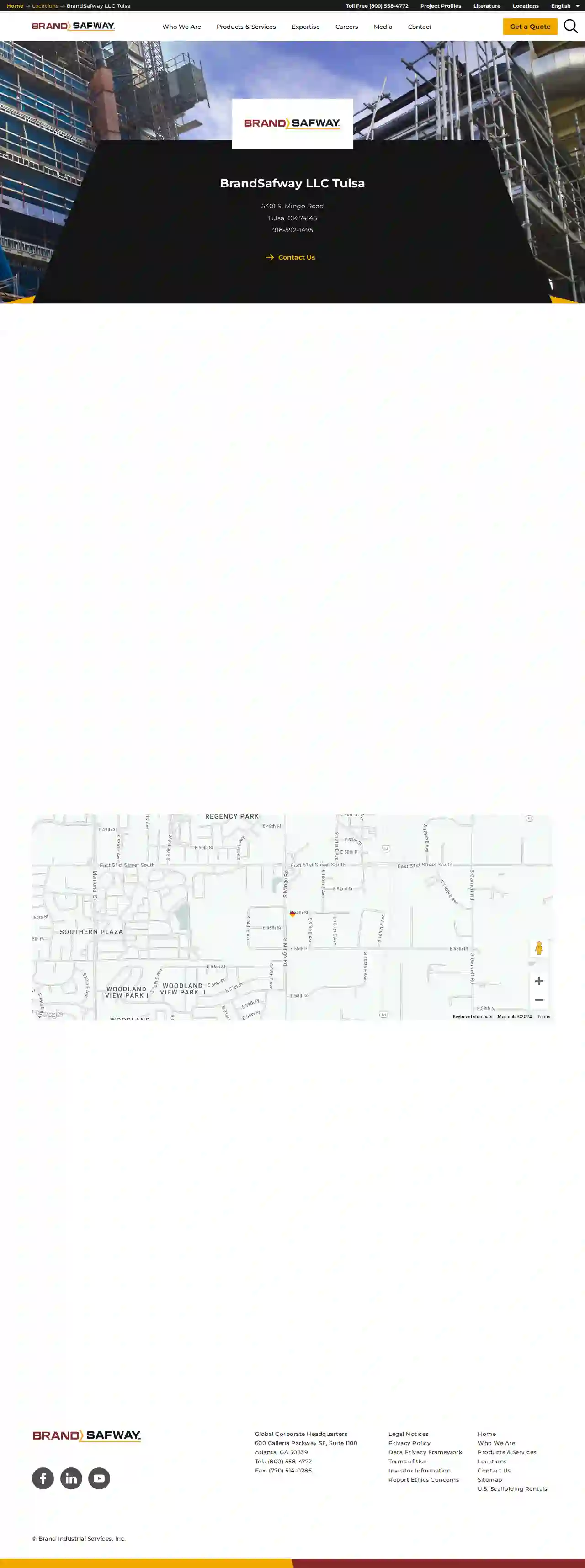
BrandSafway LLC Tulsa
4.413 reviews123 BrandSafway Blvd, Tulsa, 12345, USBrandSafway is a leading provider of access solutions, including scaffolding, aerial work platforms, and forming and shoring. With a strong commitment to safety, quality, and customer satisfaction, BrandSafway offers a wide range of services tailored to meet the unique needs of clients across various industries. Their team of experienced professionals is dedicated to delivering innovative solutions that enhance efficiency and productivity, ensuring successful project outcomes.
- Services
- Why Us?
- Accreditations
- Our Team
- Testimonials
Get Quote- La
Ladders Of Tulsa
4.913 reviewsTulsa, US- Services
- Why Us?
Get Quote - Su
Sunbelt Rentals Scaffold Services
4.442 reviewsTulsa, US- Services
- Why Us?
Get Quote - AB
ABC Equipment Rental
4.6311 reviewsTulsa, US- Services
- Why Us?
Get Quote - Da
Dawson Building Supply and Salvage LLC
4.6102 reviewsTulsa, US- Services
- Why Us?
Get Quote
Over 2,353+ Scaffolding Companies on our platform
Our scaffolding experts operate in Miami & beyond!
ScaffoldingHQ has curated and vetted the Best Scaffolding Businesses in Miami. Find the most trustworthy contractor today.
Frequently Asked Questions About Scaffolding Rental
- Contact Your Local Authority: Start by contacting your local council or planning authority.
- Provide Project Details: Be prepared to provide details about the scaffolding (size, location, duration), the project, and any relevant drawings or plans.
- Application and Fees: Complete a permit application form and pay any associated fees.
- Inspection: An inspector may visit the site to verify the scaffolding plans and safety measures. The scaffolding rental company or the erector may be able to assist you with the permit application process.
- Online Directories: ScaffoldingHQ is a specialized directory that connects you with reputable rental providers.
- Search Engines: Search for 'scaffolding rental [your location]' on Google or other search engines.
- Local Business Listings: Check local business listings, such as Yelp or Yellow Pages, for scaffolding rental companies.
- Word-of-Mouth Referrals: Ask contractors, builders, or friends for recommendations.
- Tube and Clamp: Capacity depends on the configuration and the strength of the components.
- System Scaffolding: Typically has higher load capacities due to its pre-engineered design.
- Mobile Towers: Have specific weight limits based on their size and model.
- Base Plates and Adjusters: Use adjustable base plates to level the scaffolding legs on uneven surfaces.
- Ground Preparation: Level the ground as much as possible before erection.
- Bracing and Support: Additional bracing and support may be necessary to compensate for uneven ground conditions.
- Professional Assessment: A qualified scaffolding erector should assess the ground and determine the appropriate measures for safe erection.
How do I get a permit for scaffolding?
How do I find scaffolding rental companies near me?
What are the weight limits for different types of scaffolding?
Can I use scaffolding on uneven ground?
How do I get a permit for scaffolding?
- Contact Your Local Authority: Start by contacting your local council or planning authority.
- Provide Project Details: Be prepared to provide details about the scaffolding (size, location, duration), the project, and any relevant drawings or plans.
- Application and Fees: Complete a permit application form and pay any associated fees.
- Inspection: An inspector may visit the site to verify the scaffolding plans and safety measures. The scaffolding rental company or the erector may be able to assist you with the permit application process.
How do I find scaffolding rental companies near me?
- Online Directories: ScaffoldingHQ is a specialized directory that connects you with reputable rental providers.
- Search Engines: Search for 'scaffolding rental [your location]' on Google or other search engines.
- Local Business Listings: Check local business listings, such as Yelp or Yellow Pages, for scaffolding rental companies.
- Word-of-Mouth Referrals: Ask contractors, builders, or friends for recommendations.
What are the weight limits for different types of scaffolding?
- Tube and Clamp: Capacity depends on the configuration and the strength of the components.
- System Scaffolding: Typically has higher load capacities due to its pre-engineered design.
- Mobile Towers: Have specific weight limits based on their size and model.
Can I use scaffolding on uneven ground?
- Base Plates and Adjusters: Use adjustable base plates to level the scaffolding legs on uneven surfaces.
- Ground Preparation: Level the ground as much as possible before erection.
- Bracing and Support: Additional bracing and support may be necessary to compensate for uneven ground conditions.
- Professional Assessment: A qualified scaffolding erector should assess the ground and determine the appropriate measures for safe erection.